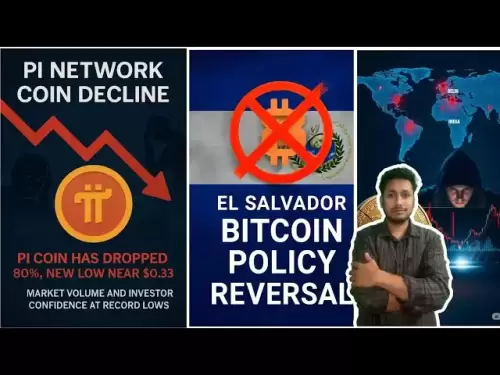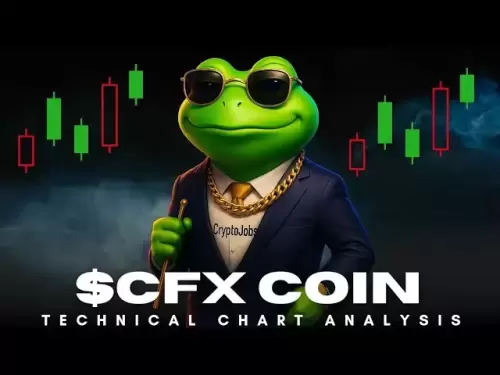-
 Bitcoin
Bitcoin $119700
0.53% -
 Ethereum
Ethereum $4508
5.39% -
 XRP
XRP $3.270
2.86% -
 Tether USDt
Tether USDt $1.000
0.00% -
 BNB
BNB $831.0
2.92% -
 Solana
Solana $189.6
6.89% -
 USDC
USDC $0.9999
-0.01% -
 Dogecoin
Dogecoin $0.2350
2.92% -
 TRON
TRON $0.3500
1.34% -
 Cardano
Cardano $0.8420
6.73% -
 Chainlink
Chainlink $23.26
8.42% -
 Hyperliquid
Hyperliquid $44.42
1.44% -
 Stellar
Stellar $0.4512
3.16% -
 Sui
Sui $3.895
5.15% -
 Bitcoin Cash
Bitcoin Cash $618.7
5.88% -
 Hedera
Hedera $0.2601
4.43% -
 Ethena USDe
Ethena USDe $1.001
0.01% -
 Avalanche
Avalanche $24.45
4.90% -
 Litecoin
Litecoin $128.1
5.41% -
 Toncoin
Toncoin $3.454
1.64% -
 UNUS SED LEO
UNUS SED LEO $9.065
0.44% -
 Shiba Inu
Shiba Inu $0.00001359
3.41% -
 Uniswap
Uniswap $11.42
1.78% -
 Polkadot
Polkadot $4.165
6.36% -
 Cronos
Cronos $0.1664
-0.50% -
 Ethena
Ethena $0.8108
1.79% -
 Dai
Dai $1.000
0.00% -
 Pepe
Pepe $0.00001213
5.22% -
 Bitget Token
Bitget Token $4.438
0.25% -
 Aave
Aave $313.3
5.02%
What are the technical features of SOL?
Solana's high transaction speed and low fees stem from its Proof of History (PoH) consensus mechanism, optimized network architecture, and efficient account model, enabling fast smart contract execution and dApp development.
Mar 07, 2025 at 06:24 am
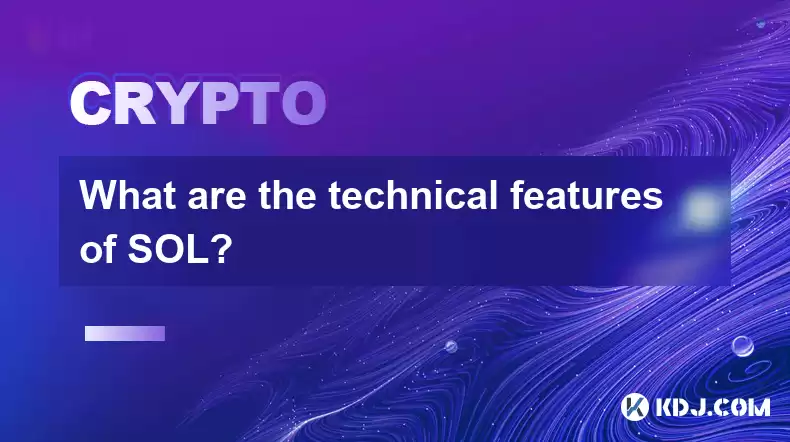
Key Points:
- Solana's core technical feature is its innovative consensus mechanism, Proof of History (PoH).
- High transaction throughput and low latency are achieved through PoH and a highly optimized network architecture.
- Programmable smart contracts, similar to Ethereum's, enable decentralized applications (dApps) on Solana.
- Solana utilizes a unique account model and transaction processing system for efficiency.
- The network's security relies on a combination of PoH and a robust validator network.
What are the technical features of SOL?
Solana (SOL) distinguishes itself from other cryptocurrencies through a unique blend of technological innovations. Its core strength lies in its ability to achieve significantly higher transaction speeds and lower fees compared to many competitors. This is primarily due to its novel consensus mechanism and optimized network architecture. Let's delve into the specifics.
Proof of History (PoH): The Heart of Solana
Solana's defining feature is its Proof of History (PoH) consensus mechanism. Unlike Proof-of-Work (PoW) or Proof-of-Stake (PoS), PoH incorporates a verifiable clock into the blockchain. This clock, implemented using cryptographic hashing, timestamps transactions and blocks, significantly reducing the time needed for consensus. Essentially, it provides a verifiable record of when events occurred, streamlining the validation process. This verifiable clock is crucial for Solana's high throughput.
High Throughput and Low Latency
The combination of PoH and Solana's carefully designed network architecture leads to exceptionally high transaction throughput. Solana can process thousands of transactions per second, far exceeding many other blockchain networks. This high throughput, coupled with low latency (the time it takes for a transaction to be confirmed), makes it suitable for applications demanding real-time interactions. This efficiency is crucial for applications like decentralized exchanges (DEXs) and gaming platforms.
Smart Contracts and Programmability
Solana supports the development and deployment of smart contracts, similar to Ethereum. These smart contracts allow developers to create decentralized applications (dApps) on the Solana blockchain. This programmability unlocks a vast potential for diverse applications, from decentralized finance (DeFi) protocols to non-fungible token (NFT) marketplaces and more. The Solana ecosystem actively fosters the creation of these dApps.
Account Model and Transaction Processing
Solana employs a unique account model and transaction processing system optimized for speed and efficiency. Accounts are designed to minimize data storage requirements and transaction processing time. The network uses a parallel processing approach, enabling multiple transactions to be processed concurrently, further contributing to its high throughput. This design choice significantly reduces bottlenecks often encountered in other blockchains.
Security and the Validator Network
While PoH is a central element, Solana's security also depends on its validator network. These validators are responsible for verifying and confirming transactions. A robust and distributed validator network is crucial for the overall security and resilience of the blockchain. The network aims to maintain decentralization through a broad distribution of validators, preventing any single entity from exerting undue influence. The system incorporates mechanisms to discourage malicious activity.
Turbine and Replication
Solana's architecture incorporates Turbine and replication to further enhance efficiency and scalability. Turbine is a transaction processing pipeline that handles a massive influx of transactions. Replication ensures data consistency across the network, maintaining data integrity even under heavy load. This is essential for maintaining the speed and reliability of the network. These elements contribute significantly to Solana's speed advantages.
Sealevel and its Role in Parallel Processing
Sealevel is a crucial component of Solana's architecture, facilitating the parallel processing of transactions. It's a horizontally scalable database that can handle a vast number of simultaneous transactions. This allows the network to achieve its impressive transaction processing capabilities. The design emphasizes efficient handling of concurrent operations, a critical aspect of high-throughput blockchains.
Solana's Virtual Machine (SVM)
Solana’s Virtual Machine (SVM) is a runtime environment for smart contracts. It's designed for efficiency and speed, enabling the rapid execution of smart contract code. The design aims to minimize computational overhead while maintaining security. This is vital for the smooth functioning of dApps built on the Solana blockchain. The SVM's architecture is carefully optimized for the Solana ecosystem.
The Role of RPC in Solana's Infrastructure
Remote Procedure Calls (RPCs) are essential for communication with the Solana network. They provide an interface for interacting with the blockchain, enabling developers and users to access data and submit transactions. The efficiency and responsiveness of the RPC infrastructure directly impact the user experience and the performance of dApps. A well-designed RPC system is critical for a smooth-running ecosystem.
Frequently Asked Questions:
Q: How does Solana's Proof of History (PoH) differ from other consensus mechanisms?
A: Unlike PoW (mining) or PoS (staking), PoH incorporates a verifiable clock, creating a timestamped record of events, speeding up consensus and transaction validation.
Q: What is Solana's transaction throughput, and how does it compare to other blockchains?
A: Solana boasts significantly higher transaction throughput (thousands of transactions per second) than many other blockchains like Bitcoin or Ethereum, resulting in faster and cheaper transactions.
Q: What are the security implications of Solana's unique architecture?
A: Solana's security relies on a combination of PoH and a distributed network of validators. However, like all blockchains, it faces potential vulnerabilities, and ongoing research and development address these concerns.
Q: How does Solana support smart contracts and dApp development?
A: Solana provides a robust environment for developing and deploying smart contracts through its virtual machine (SVM), enabling the creation of a wide variety of decentralized applications.
Q: What are the potential limitations of Solana's technology?
A: While Solana offers high throughput, concerns have been raised regarding centralization, network outages, and the complexity of its architecture. These are ongoing areas of development and improvement.
Disclaimer:info@kdj.com
The information provided is not trading advice. kdj.com does not assume any responsibility for any investments made based on the information provided in this article. Cryptocurrencies are highly volatile and it is highly recommended that you invest with caution after thorough research!
If you believe that the content used on this website infringes your copyright, please contact us immediately (info@kdj.com) and we will delete it promptly.
- Unich's OTC Exchange: Surging with $1.2B Volume – What's the Hype?
- 2025-08-13 02:50:11
- MoonBull's Explosive Moves: Your Crypto Whitelist Ticket to Ride!
- 2025-08-13 02:30:11
- MAGACOIN Finance: Don't Miss the Presale Bonus!
- 2025-08-13 02:30:11
- Trump's Crypto Kingdom: $2.4 Billion and Counting
- 2025-08-13 02:50:11
- Solana, LSTs, and SEC Approval: A New Dawn for Crypto?
- 2025-08-13 02:55:12
- Bitcoin's Profit Surge: Unpacking the BTC Value Boom
- 2025-08-13 02:55:12
Related knowledge

How to purchase Aragon (ANT)?
Aug 09,2025 at 11:56pm
Understanding Aragon (ANT) and Its PurposeAragon (ANT) is a decentralized governance token that powers the Aragon Network, a platform built on the Eth...

Where to trade Band Protocol (BAND)?
Aug 10,2025 at 11:36pm
Understanding the Role of Private Keys in Cryptocurrency WalletsIn the world of cryptocurrency, a private key is one of the most critical components o...

What is the most secure way to buy Ocean Protocol (OCEAN)?
Aug 10,2025 at 01:01pm
Understanding Ocean Protocol (OCEAN) and Its EcosystemOcean Protocol (OCEAN) is a decentralized data exchange platform built on blockchain technology,...
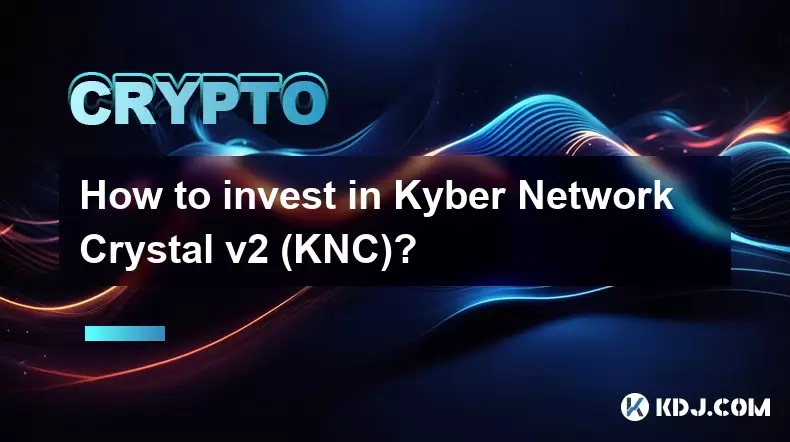
How to invest in Kyber Network Crystal v2 (KNC)?
Aug 12,2025 at 05:21pm
Understanding Kyber Network Crystal v2 (KNC)Kyber Network is a decentralized liquidity hub built on the Ethereum blockchain that enables instant token...

Where can I buy UMA (UMA)?
Aug 07,2025 at 06:42pm
Understanding UMA and Its Role in Decentralized FinanceUMA (Universal Market Access) is an Ethereum-based decentralized finance (DeFi) protocol design...
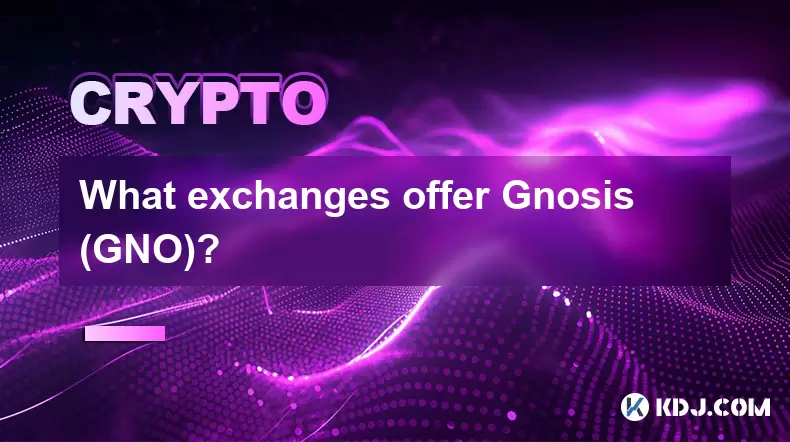
What exchanges offer Gnosis (GNO)?
Aug 12,2025 at 12:42pm
Overview of Gnosis (GNO) and Its Role in the Crypto EcosystemGnosis (GNO) is a decentralized prediction market platform built on the Ethereum blockcha...

How to purchase Aragon (ANT)?
Aug 09,2025 at 11:56pm
Understanding Aragon (ANT) and Its PurposeAragon (ANT) is a decentralized governance token that powers the Aragon Network, a platform built on the Eth...

Where to trade Band Protocol (BAND)?
Aug 10,2025 at 11:36pm
Understanding the Role of Private Keys in Cryptocurrency WalletsIn the world of cryptocurrency, a private key is one of the most critical components o...

What is the most secure way to buy Ocean Protocol (OCEAN)?
Aug 10,2025 at 01:01pm
Understanding Ocean Protocol (OCEAN) and Its EcosystemOcean Protocol (OCEAN) is a decentralized data exchange platform built on blockchain technology,...

How to invest in Kyber Network Crystal v2 (KNC)?
Aug 12,2025 at 05:21pm
Understanding Kyber Network Crystal v2 (KNC)Kyber Network is a decentralized liquidity hub built on the Ethereum blockchain that enables instant token...

Where can I buy UMA (UMA)?
Aug 07,2025 at 06:42pm
Understanding UMA and Its Role in Decentralized FinanceUMA (Universal Market Access) is an Ethereum-based decentralized finance (DeFi) protocol design...

What exchanges offer Gnosis (GNO)?
Aug 12,2025 at 12:42pm
Overview of Gnosis (GNO) and Its Role in the Crypto EcosystemGnosis (GNO) is a decentralized prediction market platform built on the Ethereum blockcha...
See all articles























